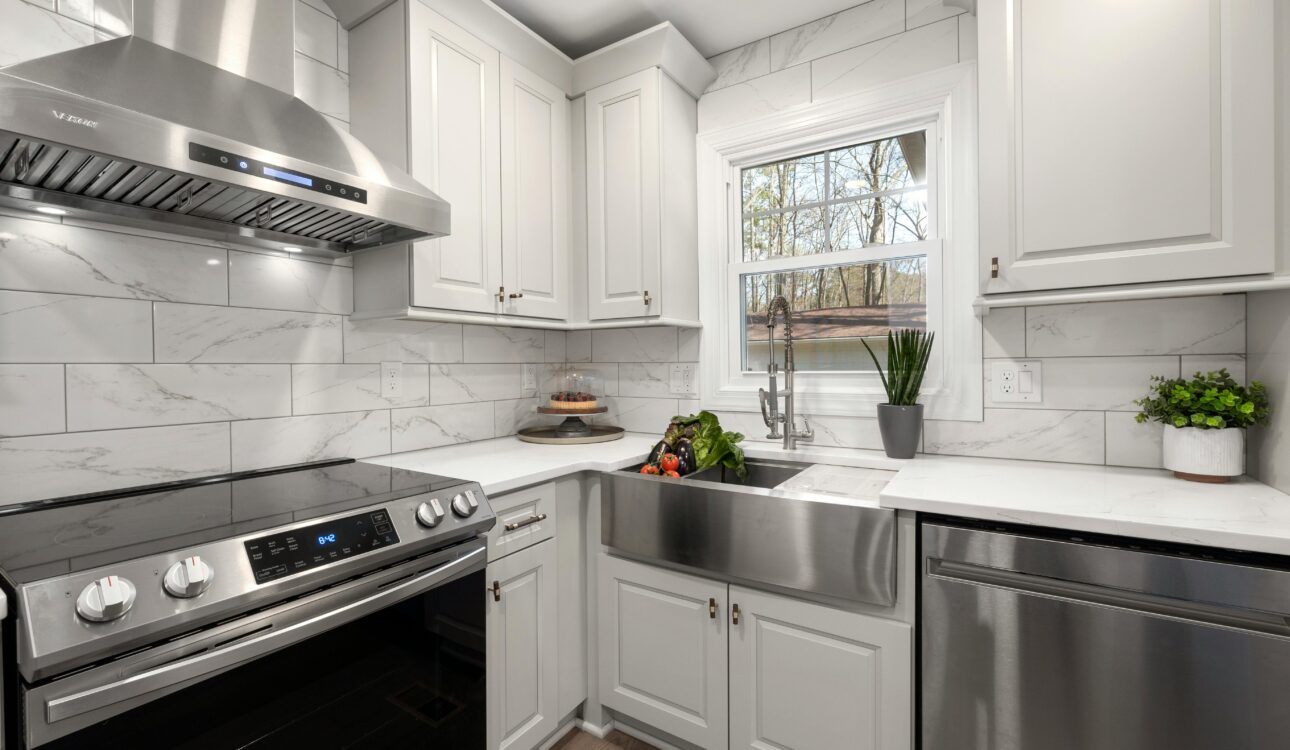Cooking in a cramped kitchen can quickly turn up the heat, making your culinary endeavors less enjoyable and your kitchen uncomfortable, especially in the hot summer months. If you find yourself opting for takeout over cooking a delicious meal, it may be time to explore more effective ventilation options. Here’s how you can upgrade your kitchen ventilation and create a more pleasant, comfortable cooking environment throughout the year:
1. Ensure The Cooking Steam is Removed
Modern kitchen hood exhaust systems can reduce cooking odors and hot steam, remove airborne grease, improve indoor air quality, and create a more enjoyable cooking experience for you and your family. However, many kitchen range hoods are not as effective as other options. Here are some things you can do to improve their effectiveness:
- Ensure your range hood is installed correctly with a properly sized vent pipe that is tightly sealed. Pipes are often too small or have too many elbows that greatly reduce their exhaust airflow and effectiveness.
- Properly sized exhaust hoods are based on the size of the cooking appliance and fuel type. We sometimes see installed hoods that are too small and not able to effectively trap and remove all pollutants from the air.
- Downdraft systems are not as effective as updrafts. Steam rises! Consider installing an updraft. Azalea Kitchens frequently installs new vent pipes to improve exhaust effectiveness.
2. Optimize A/C Supply Vent Placement for Maximum Efficiency
Ensure your vents are strategically located to introduce cool air as they should:
- The A/C supply vent underneath the sink base cabinet often does not have a diverter (aka “turtle back”) to direct the conditioned cool air out into the room. Diverters are required by code now and can be added retroactively.
- “HVAC airflow balancing” is the term used for distributing the right portion of your home A/C system’s cool air into the right rooms. It could be that the kitchen just needs the airflow control damper on its A/C vent opened further to rebalance and direct more cool air into the kitchen. This is not the louvers on the vent grill in the floor or ceiling. The damper is at the beginning of the branch duct run.
- Also since it’s essential to have both a supply and return vent to ensure adequate air circulation for effective cooling, ensure your return wall filter is clean so it doesn’t restrict airflow back to your home’s A/C system.
3. Open Up Your Kitchen Layout for Better Airflow
Removing a kitchen wall can improve the airflow, convenience, functionality, and overall look of your space. Many homeowners opt to remove walls to connect adjoining rooms and create an open-plan kitchen layout that enhances airflow and fosters a more spacious atmosphere:
- Removing Walls: Opening up your kitchen can significantly enhance airflow and create a more spacious and inviting environment.
- Expanding Windows and Doorways: Larger openings allow for better ventilation, inviting natural light and fresh air into your kitchen, making it a more comfortable space for cooking and entertaining.
4. Consider an Induction Range/Cooktop
Investing in an induction range or cooktop can also help manage kitchen heat:
- Induction Cooking: Unlike traditional gas or electric ranges, induction cooktops heat the cookware directly without heating the surrounding air as much. This can help maintain a cooler kitchen environment, especially in warmer climates or during extended cooking sessions.
Contact us for a free consultation to see how we can transform your kitchen into a cool, comfortable space where cooking is a pleasure, not a battle against heat. Let’s create a kitchen environment that enhances your culinary experience year-round.






